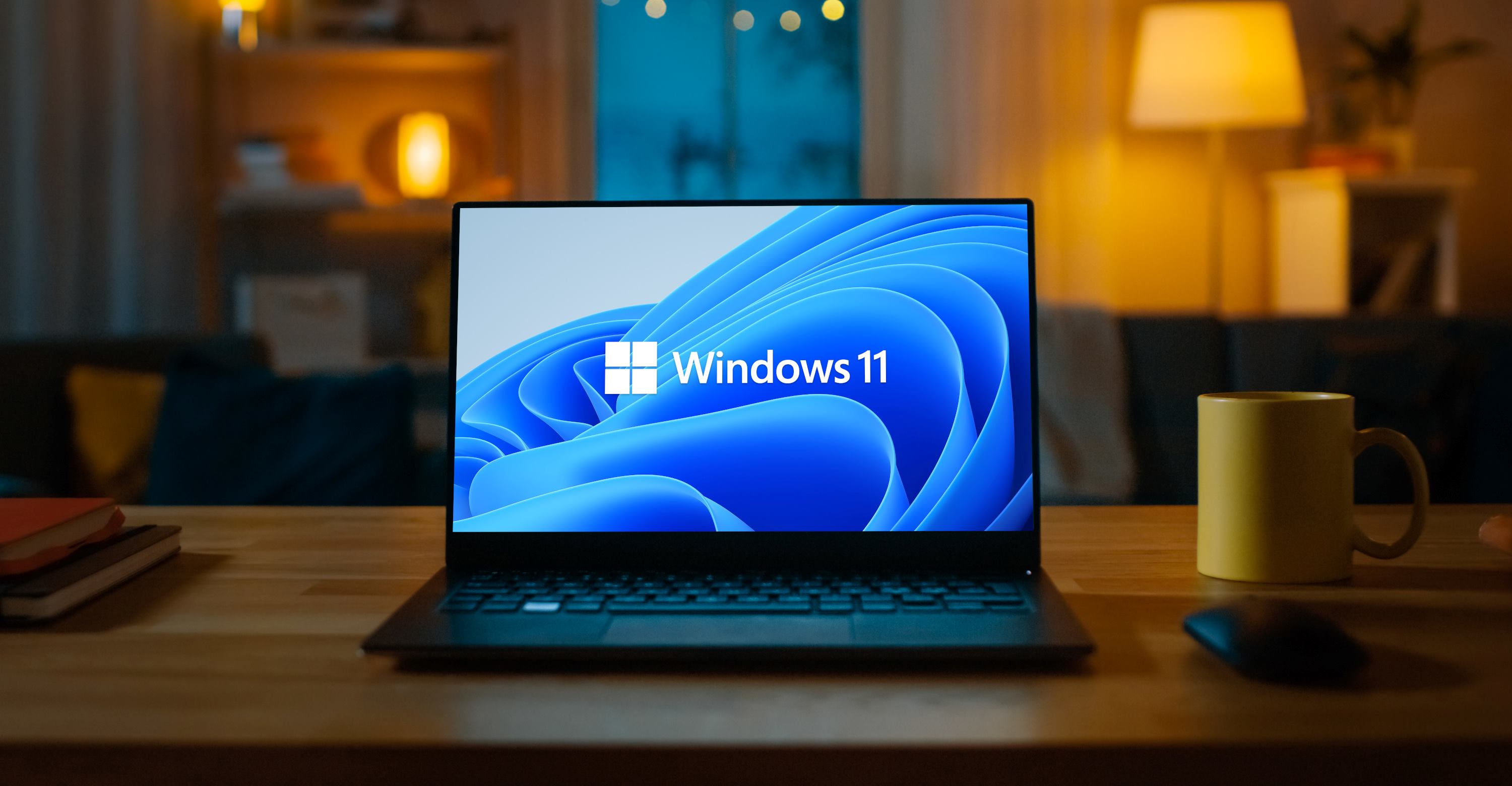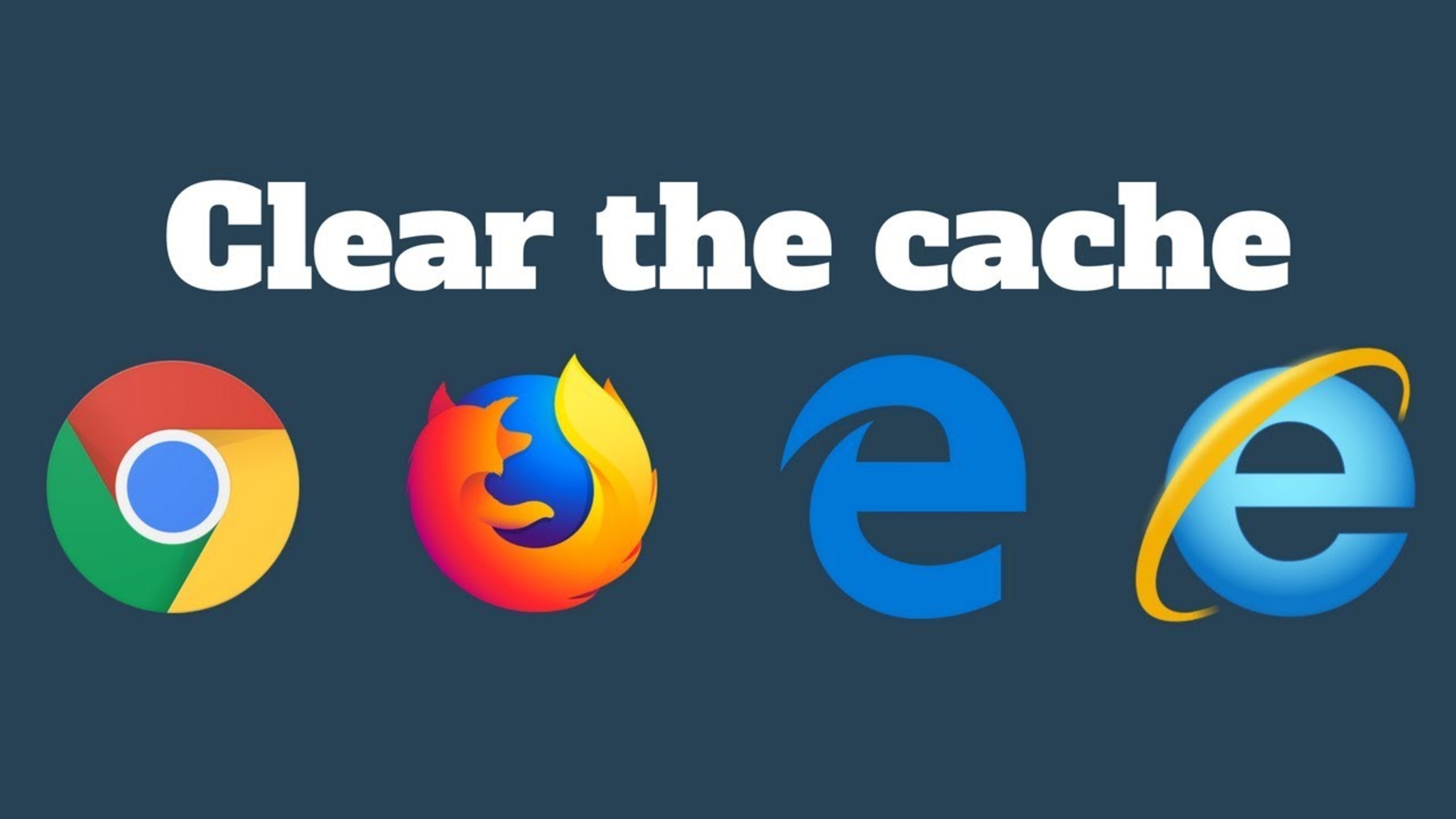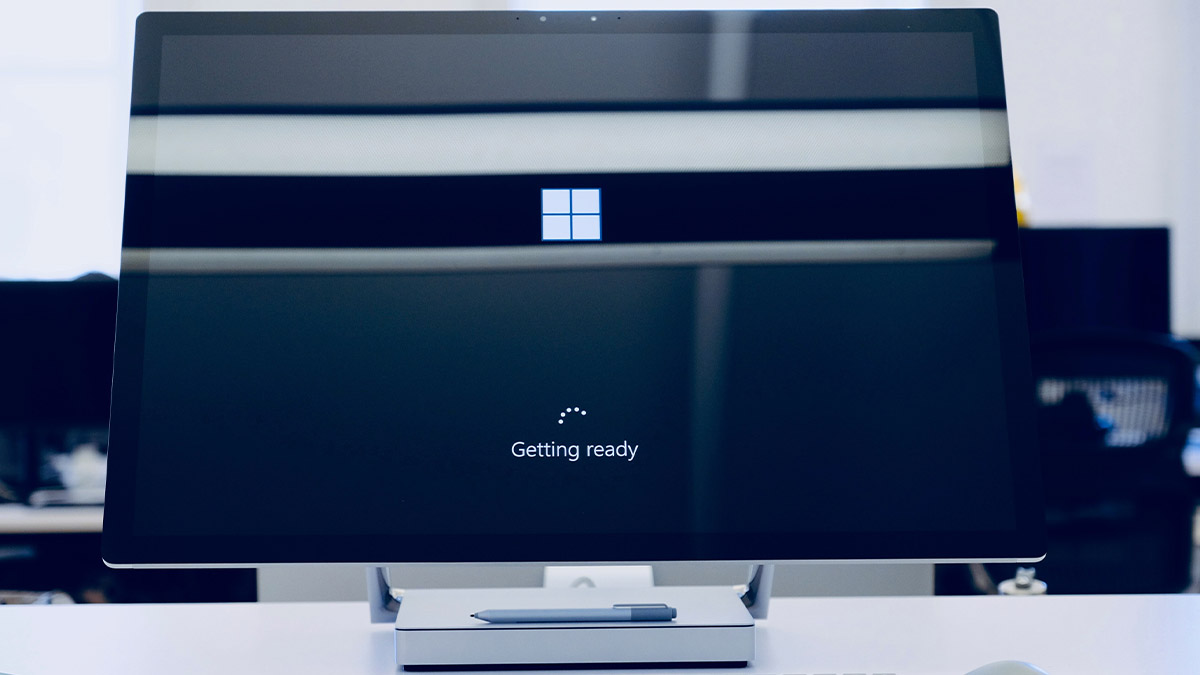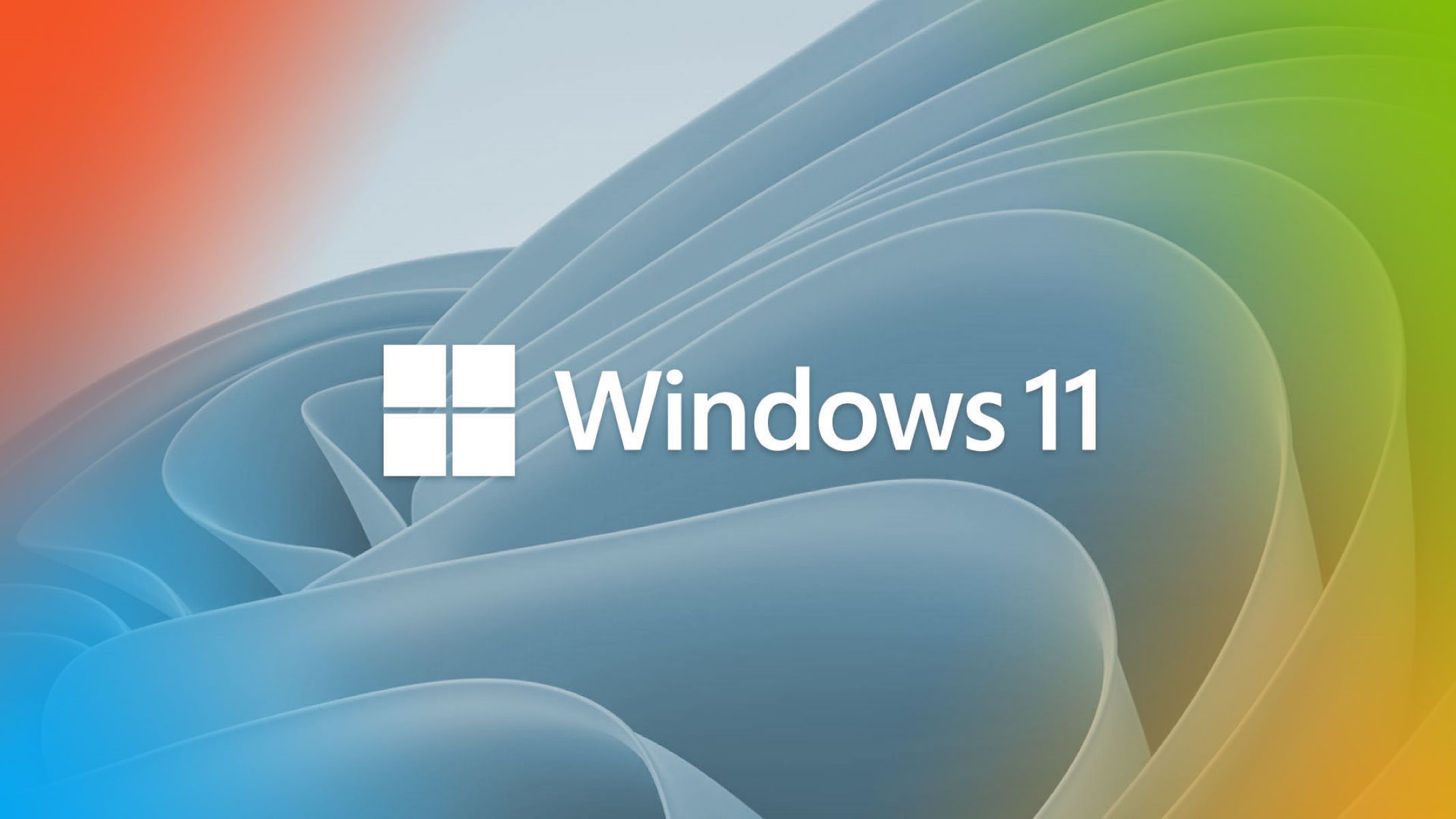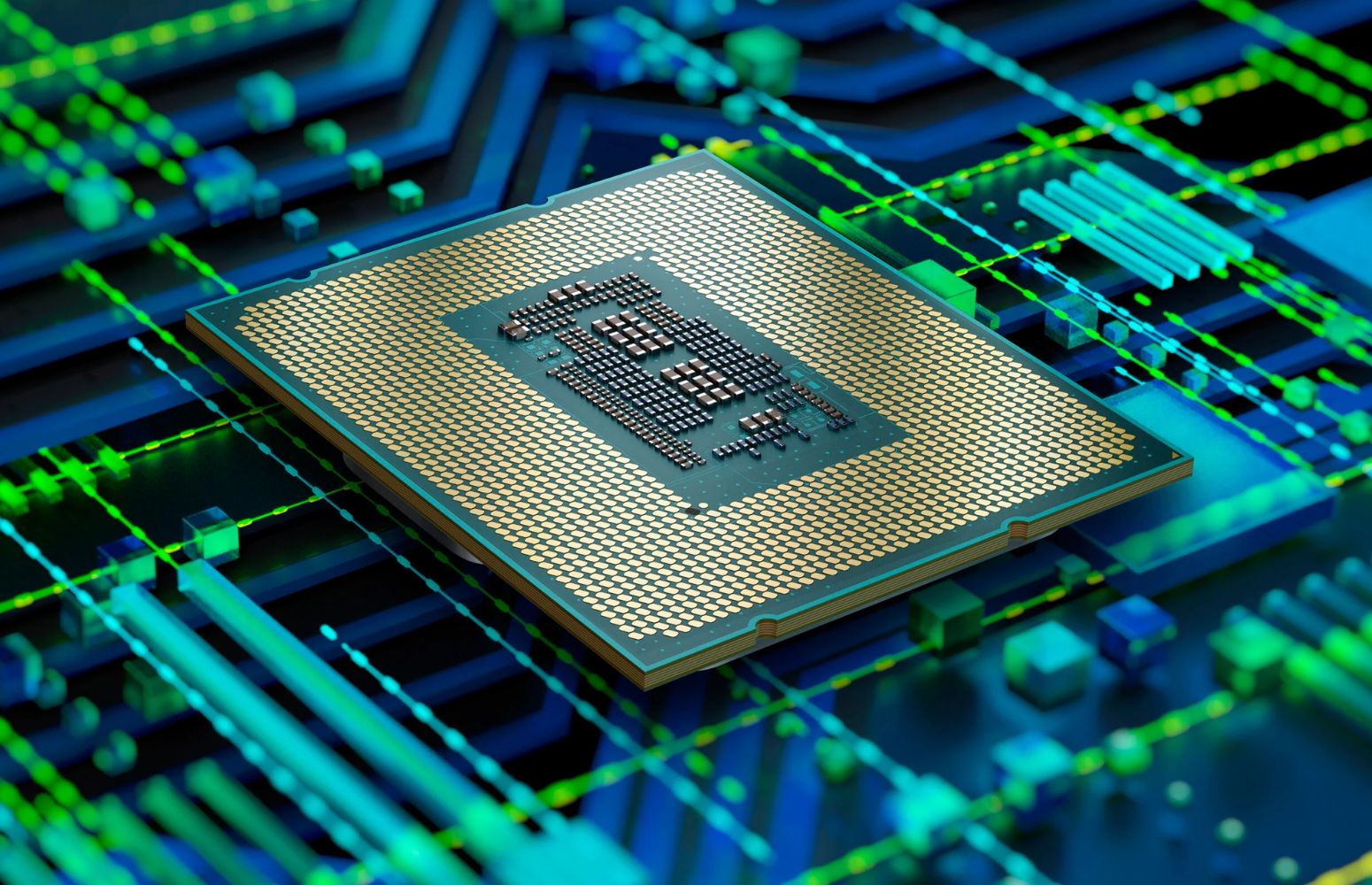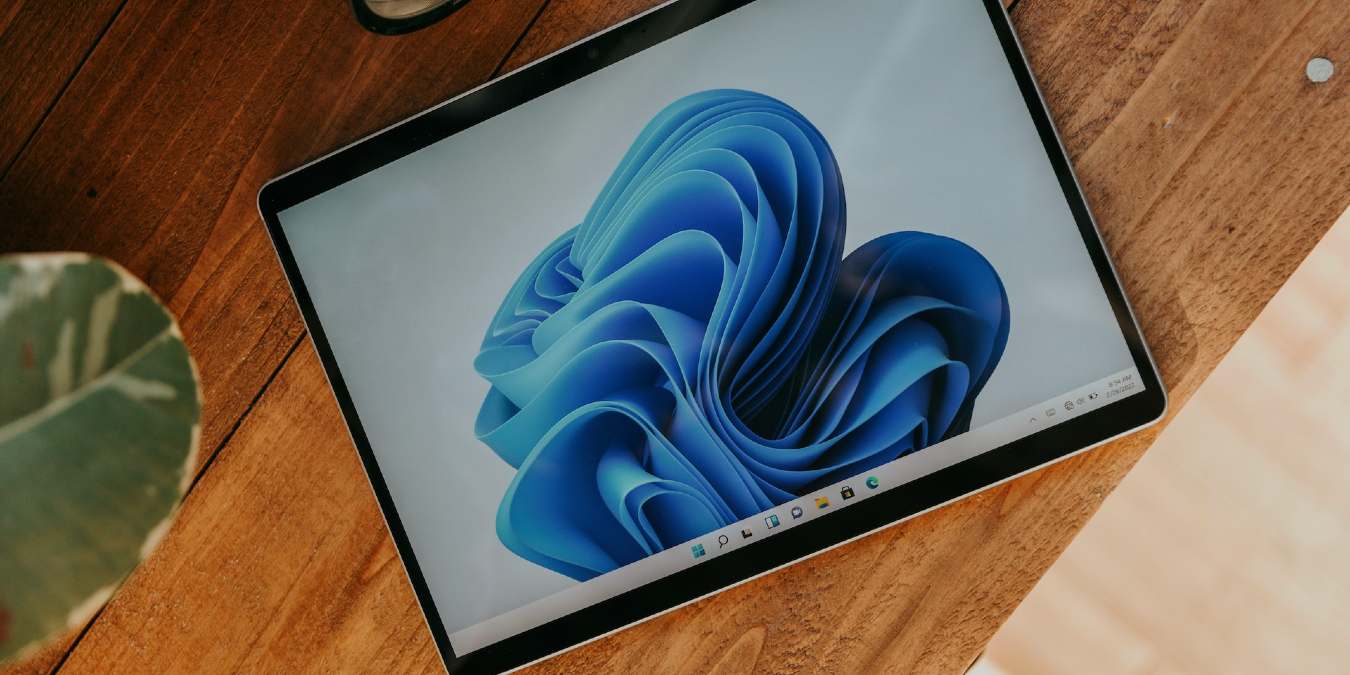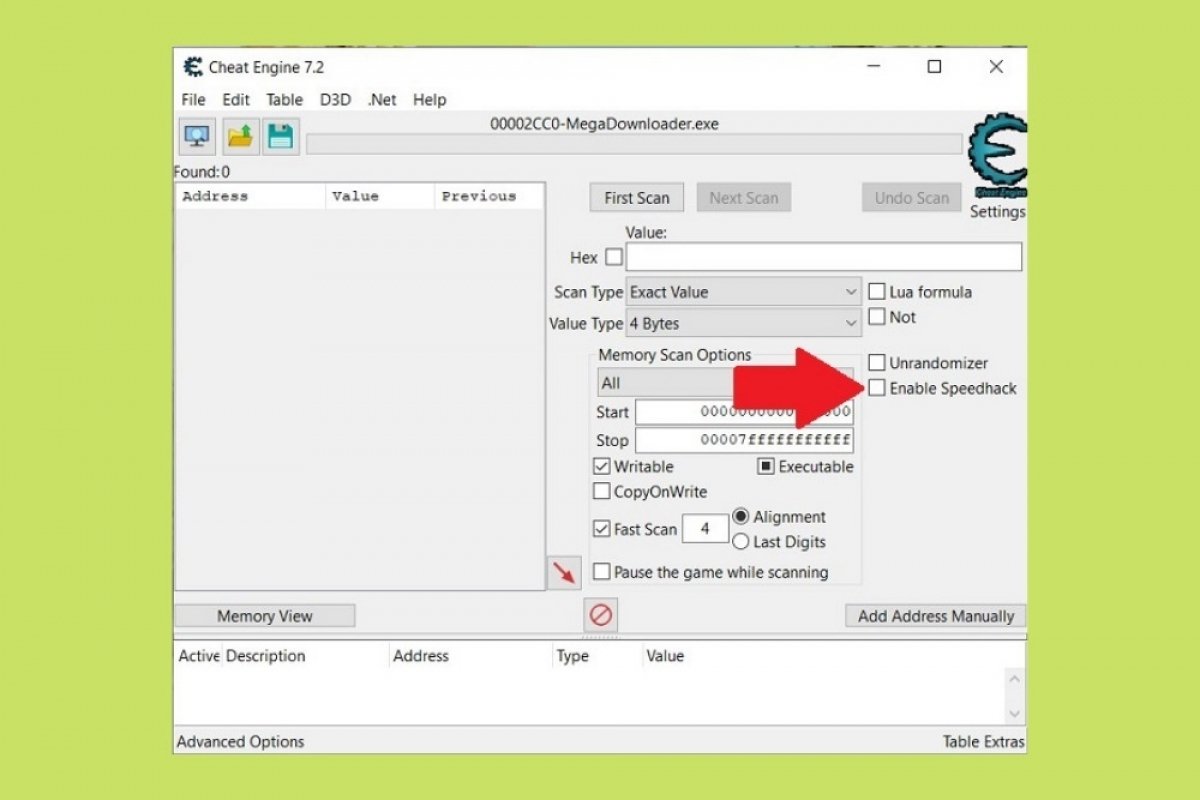Introduction
Welcome to this guide on how to clear cache on Windows 11. If you’ve recently upgraded to the latest version of Windows, you may have noticed that your system is running slower or encountering glitches. One possible reason for this is the accumulation of cache files.
But what exactly is cache? In simple terms, cache refers to temporary storage that stores data or files to speed up the retrieval process. When you browse the internet, use applications, or perform any other task on your computer, cache files are created and stored on your system.
While cache files can be helpful in improving the performance of your system, they can also take up a significant amount of space over time. Additionally, outdated or corrupted cache files can cause various issues like slow loading times, unresponsive applications, or even security vulnerabilities.
That’s why regularly clearing the cache on your Windows 11 system is important to ensure optimal performance and to free up valuable storage space. In the following sections of this guide, we’ll explore different methods to clear cache on Windows 11.
What is cache?
Cache refers to temporary storage that holds copies of data or files for quick access. Whenever you access a website, launch an application, or perform any task on your computer, cache files are created and stored on your system. The purpose of cache is to improve the overall performance and speed up the retrieval process.
When you revisit a website or use an application that you’ve previously accessed, your computer can retrieve the necessary data from the cache instead of fetching it from the original source. This saves time and reduces the load on the system resources.
Cache is utilized by various components of your Windows 11 system, including the web browser, operating system, and individual applications. Here are some common types of cache:
- Web Browser Cache: Every time you visit a website, your browser stores copies of web pages, images, scripts, and other content in its cache. When you revisit the same website, the browser can load these files locally, resulting in faster page load times.
- App Cache: Applications on your computer also generate cache files to store temporary data. This can include downloaded files, images, or even user preferences. App cache can enhance performance by reducing the need to fetch data from the internet or from disk storage.
- DNS Cache: When you access websites using domain names, your computer temporarily stores the IP addresses of these sites in the DNS cache. This helps speed up subsequent visits because your computer can quickly resolve the domain names to their corresponding IP addresses.
- Thumbnail Cache: Windows generates thumbnail images for faster previewing and smoother navigation in File Explorer. These thumbnails are stored in the thumbnail cache, allowing you to view them without having to load the full-size images every time.
While cache plays a crucial role in enhancing your system’s performance, it can also accumulate over time and occupy a significant amount of storage space. Additionally, outdated or corrupted cache files can lead to issues like slow browsing, application crashes, or incorrect display of thumbnails.
That’s why periodically clearing the cache on your Windows 11 system is essential. In the next section, we’ll explore the reasons why you should clear cache on Windows 11.
Why should you clear cache on Windows 11?
Clearing the cache on your Windows 11 system is crucial for several reasons. Let’s take a closer look at why you should regularly clear the cache:
1. Free up storage space: Cache files can take up a significant amount of storage space on your system. Over time, these files can accumulate and consume valuable disk space. By clearing the cache, you can reclaim space and ensure that your system has ample storage for important files and applications.
2. Improve system performance: When cache files become bloated or corrupted, they can hinder the performance of your system. Slow browsing, application lag, and system crashes are some common symptoms of a cluttered cache. Clearing the cache helps eliminate these issues and enables your system to run smoothly and efficiently.
3. Resolve compatibility issues: Outdated or incompatible cache files can cause conflicts with new software updates or system upgrades. Clearing the cache ensures that you start with a clean slate and reduces the chances of encountering compatibility issues when installing new applications or updates.
4. Enhance privacy and security: Cache files can contain sensitive information like login credentials, browsing history, or personal data. Clearing the cache regularly minimizes the risk of unauthorized access to your personal information and helps protect your privacy. Additionally, it reduces the likelihood of security vulnerabilities that can be exploited through outdated or compromised cache files.
5. Revoke cached permissions: Some applications and websites store permissions in cache files. Clearing the cache revokes these permissions and ensures that applications and websites cannot access your system without your explicit consent.
6. Resolve display issues: If you’re experiencing problems with thumbnail previews or incorrect display of images, clearing the thumbnail cache can often resolve these issues. By rebuilding the thumbnail cache, you can ensure that the system displays accurate and up-to-date thumbnail images.
By understanding the benefits of clearing cache on Windows 11, you can take proactive measures to maintain an optimized and efficient system. In the following sections, we’ll explore different methods to clear cache on Windows 11, allowing you to choose the most suitable approach for your needs.
Methods to clear cache on Windows 11
Now that we’ve discussed the importance of clearing cache on Windows 11, let’s delve into the various methods you can use to accomplish this task. Here are five effective ways to clear cache on your Windows 11 system:
1. Clearing temporary files:
Windows 11 has a built-in tool called Storage Sense that allows you to automatically clean up temporary files, including cache files. To access this feature, go to Settings > System > Storage, and click on “Configure Storage Sense or run it now.” Enable Storage Sense and customize the cleanup settings according to your preferences. Once enabled, Windows will automatically clear temporary files, including cache, based on your specified schedule.
2. Clearing browser cache:
If you primarily notice performance issues or slow browsing speeds, clearing your browser cache can help. In popular browsers like Google Chrome, Microsoft Edge, or Mozilla Firefox, you can usually find the cache clearing option in the browser settings. Look for options like “Clear browsing data” or “Clear cache” and follow the prompts to clear the cache files associated with your browser.
3. Clearing app cache:
For individual applications, you can often find settings or options to clear the app cache. Launch the specific app and navigate to its settings or preferences. Look for options related to storage, cache, or temporary files. Clearing the app cache will remove any temporary or unnecessary files that might be affecting the performance of the application.
4. Clearing DNS cache:
If you’re experiencing slow or inconsistent internet connectivity, clearing the DNS cache can often help. Launch the Command Prompt as an administrator and enter the command “ipconfig /flushdns” without the quotation marks. This command will clear the DNS cache and force your system to retrieve fresh DNS records when accessing websites.
5. Clearing thumbnail cache:
If you’re encountering issues with thumbnail previews, clearing the thumbnail cache can often resolve this problem. Open File Explorer, click on the “View” tab, and check the box next to “Hidden items” to reveal hidden files and folders. Navigate to the following location: C:\Users\YourUsername\AppData\Local\Microsoft\Windows\Explorer. Delete all files with the word “thumbnail” in their name. Once deleted, restart your system, and Windows will rebuild the thumbnail cache from scratch.
By leveraging these methods, you can effectively clear cache on your Windows 11 system. Remember to perform these cache clearing steps periodically to maintain optimal system performance.
Clearing temporary files
Clearing temporary files is a crucial step in clearing cache on your Windows 11 system. Temporary files, including cache files, can accumulate over time and occupy a significant amount of storage space. By removing these files, you can free up storage space and improve the overall performance of your system.
Windows 11 provides a built-in tool called Storage Sense that allows you to automatically clean up temporary files, including cache files. To access this feature, follow these steps:
- Open the Settings app by clicking on the Start menu and selecting the Settings icon (a gear-shaped symbol).
- In the Settings app, click on the “System” option.
- On the left sidebar, click on “Storage” to access the storage settings.
- On the main screen, you will see an option called “Configure Storage Sense or run it now.” Click on this option.
- Toggle the switch to enable Storage Sense.
- Customize the cleanup settings according to your preferences. You can choose to delete temporary files and recycle bin items regularly, as well as specify how long files should be kept before they are deleted.
- Once you’ve enabled and customized Storage Sense, Windows 11 will automatically clear temporary files, including cache files, based on your specified schedule.
By using Storage Sense, you can ensure that unnecessary cache files are regularly removed from your system, saving you the hassle of manually clearing them.
In addition to using Storage Sense, you can also manually clear temporary files by following these steps:
- Open the Settings app.
- Click on the “System” option.
- On the left sidebar, click on “Storage”.
- On the main screen, click on the “Temporary files” option.
- You will see a list of files that can be deleted, including temporary files, system files, and other items. Check the boxes next to the files you want to delete.
- Click on the “Remove files” button to delete the selected files.
The process may take some time depending on the amount of data to be deleted. Once the files are removed, you will have freed up valuable storage space and improved the performance of your Windows 11 system.
Clearing temporary files, whether through Storage Sense or manually, is an effective way to clear cache on Windows 11 and maintain an optimized and efficient system.
Clearing browser cache
Clearing the browser cache is an essential step in maintaining optimal performance and resolving browsing issues on your Windows 11 system. The browser cache stores copies of web pages, images, scripts, and other content to facilitate faster loading times when you revisit a website. However, over time, the cache can become bloated or contain outdated files, leading to sluggish browsing speeds or display errors.
To clear the browser cache on Windows 11, follow these steps for some popular web browsers:
Google Chrome:
- Open Google Chrome.
- Click on the menu icon (three vertical dots) in the top-right corner of the browser window.
- In the drop-down menu, hover over “More tools” and then click on “Clear browsing data”.
- Make sure the “Cached images and files” option is checked.
- Select the time range for which you want to clear the cache. You can choose “All time” to clear the entire cache.
- Click on the “Clear data” button to clear the cache.
Microsoft Edge:
- Open Microsoft Edge.
- Click on the menu icon (three horizontal dots) in the top-right corner of the browser window.
- In the drop-down menu, click on “Settings”.
- Scroll down and click on “Privacy, search, and services” in the sidebar.
- Under the “Clear browsing data” section, click on the “Choose what to clear” button.
- Ensure that the “Cached data and files” option is checked.
- Click on the “Clear” button to clear the cache.
Mozilla Firefox:
- Open Mozilla Firefox.
- Click on the menu icon (three horizontal lines) in the top-right corner of the browser window.
- In the drop-down menu, click on “Options”.
- In the left sidebar, click on “Privacy & Security”.
- Scroll down to the “Cookies and Site Data” section and click on the “Clear Data” button.
- Ensure that the “Cached Web Content” option is checked.
- Click on the “Clear” button to clear the cache.
Note that the exact steps may vary slightly depending on the version of the browser you are using. Be sure to customize the settings according to your preferences before clearing the cache.
Clearing the browser cache regularly can help improve browsing speed, resolve display errors, and ensure that you view the most up-to-date version of websites. By following the steps above, you can keep your browser cache clean and enjoy a smoother browsing experience on Windows 11.
Clearing app cache
Clearing the app cache on your Windows 11 system can help improve the performance and resolve issues with individual applications. Over time, applications generate temporary cache files to store data that can be accessed more quickly. However, these cache files can accumulate and become outdated, leading to slower application performance and potential errors.
To clear the app cache on Windows 11, follow these general steps:
- Open the application for which you want to clear the cache.
- Access the application’s settings or preferences.
- Look for options related to storage, cache, or temporary files.
- Depending on the application, you may find a specific option to clear the cache or delete temporary files.
- Select the option to clear the cache or delete temporary files.
- Follow any additional prompts or instructions to complete the process.
The specific steps for clearing app cache can vary depending on the application you are using. Here are a few examples of how to clear the cache in popular applications:
Microsoft Office:
- Open an Office application, such as Word, Excel, or PowerPoint.
- Click on the “File” tab in the ribbon menu.
- Click on “Options” in the left sidebar.
- In the Options window, click on “Advanced” in the left sidebar.
- Scroll down to the “Display” section and click on the “File Locations” button.
- In the File Locations window, select the “Cache” or “Temp” folder and click on the “Delete” button.
- Confirm the deletion and close the windows.
Adobe Creative Cloud:
- Open the Adobe Creative Cloud application.
- Click on the profile icon in the top-right corner and select “Preferences”.
- In the Preferences window, click on the “Creative Cloud” tab.
- Click on the “Files” tab in the left sidebar.
- Under the “Creative Cloud Files” section, click on the “Clear” button.
- Confirm the deletion and close the windows.
These are just a few examples, and the steps may vary for other applications. Be sure to refer to the application’s documentation or support resources for specific instructions.
By regularly clearing the app cache, you can optimize the performance of individual applications and resolve any issues caused by outdated or corrupted cache files. Keep in mind that clearing the cache may reset certain preferences or stored data within the app, so you may need to reconfigure or sign in again after clearing the cache.
Clearing DNS cache
Clearing the DNS cache on your Windows 11 system can help resolve internet connectivity issues and ensure that your system retrieves fresh DNS information when accessing websites. The DNS cache stores the IP addresses of websites you’ve previously visited, allowing your system to quickly resolve domain names to their corresponding IP addresses. However, over time, the DNS cache can become outdated or corrupted, leading to slow or inconsistent internet connections.
To clear the DNS cache on Windows 11, follow these steps:
- Press the Windows key + R to open the Run dialog box.
- Type “cmd” (without the quotation marks) and press Enter to open the Command Prompt.
- In the Command Prompt window, type the following command and press Enter:
ipconfig /flushdns - You should see a message indicating that the DNS Resolver Cache has been successfully flushed.
Once you have successfully cleared the DNS cache, your system will retrieve fresh DNS information from the network when accessing websites, which can help resolve any connectivity issues you may be experiencing.
Clearing the DNS cache is particularly useful in scenarios where you are unable to reach specific websites or are encountering slow loading times. However, keep in mind that clearing the DNS cache does not clear the cache of your web browser. If you’re experiencing issues with a specific browser, it is recommended to clear the browser cache separately, as discussed in the previous section.
The process of clearing the DNS cache is simple and can be done quickly from the Command Prompt. By regularly clearing the DNS cache on your Windows 11 system, you can ensure a smoother and more reliable internet browsing experience.
Clearing thumbnail cache
Clearing the thumbnail cache on your Windows 11 system is a useful step to resolve display issues and ensure the accurate preview of images and files in File Explorer. Thumbnails are small preview images that are generated and displayed when you view files or folders in File Explorer. These thumbnails are stored in a cache to facilitate quick loading and smooth navigation. However, over time, the thumbnail cache can become bloated or contain outdated images, leading to incorrect or missing thumbnail previews.
To clear the thumbnail cache on Windows 11, follow these steps:
- Open File Explorer by clicking on the folder icon in the taskbar or by pressing the Windows key + E.
- On the top menu, click on the “View” tab.
- Check the box next to “Hidden items” to reveal hidden files and folders.
- Navigate to the following folder path:
C:\Users\YourUsername\AppData\Local\Microsoft\Windows\Explorer(replace “YourUsername” with your actual Windows username). - Inside the Explorer folder, locate and select all files with the word “thumbnail” in their name.
- Right-click on the selected files and choose “Delete” from the context menu.
- Confirm the deletion of the files.
After deleting the thumbnail cache files, you may need to restart your computer for the changes to take effect. Windows will automatically regenerate fresh thumbnail cache files as you browse files and folders in File Explorer.
Clearing the thumbnail cache can help resolve issues such as missing or incorrect thumbnail previews. If you notice that thumbnail images are not displaying properly or are outdated, clearing the thumbnail cache can refresh the cache and ensure accurate and up-to-date thumbnail previews.
Keep in mind that clearing the thumbnail cache will not delete your actual files but only the cached thumbnail images. After clearing the cache, you may experience a slightly slower thumbnail loading time as Windows rebuilds the cache. However, this will improve over time as the cache is regenerated with new thumbnail images.
By periodically clearing the thumbnail cache on your Windows 11 system, you can ensure that File Explorer displays accurate and visually pleasing thumbnail previews, enhancing your overall navigation experience.
Conclusion
Clearing the cache on your Windows 11 system is a crucial maintenance task that can help optimize performance, free up storage space, and resolve various issues. Throughout this guide, we explored different methods to clear cache on Windows 11, including clearing temporary files, browser cache, app cache, DNS cache, and thumbnail cache.
By clearing temporary files using the built-in Storage Sense feature or manually, you can remove clutter and unnecessary files, ensuring that your system runs smoothly. Clearing the browser cache helps improve browsing speed, resolve display errors, and ensure the most up-to-date versions of websites. Clearing the app cache allows you to optimize individual application performance and resolve issues caused by outdated or corrupted cache files.
Clearing the DNS cache can help resolve internet connectivity issues and ensure the accurate retrieval of DNS information. Lastly, clearing the thumbnail cache resolves display issues and ensures accurate thumbnail previews in File Explorer.
Regularly clearing cache on your Windows 11 system can lead to improved performance, enhanced privacy and security, and a more seamless user experience. Consider incorporating these cache-clearing practices into your computer maintenance routine to keep your system running efficiently.
Remember that each method may have slight variations depending on the specific version of Windows 11 you are using or the applications installed on your system. Consult the documentation or support resources for each respective method or application for more detailed instructions.
By taking the time to clear cache on your Windows 11 system, you can enjoy a smoother and more optimized computing experience, ensuring that your system performs at its best.







